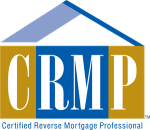As you approach retirement, having a stable and sufficient income stream is essential. However, in many cases, retirement savings don't cut it, and many retirees turn to alternative funding options to support their retirement. One such option is a reverse mortgage. A reverse mortgage can help you maintain cash flow by allowing you to tap into the equity in your home. While these loans can be beneficial, they can also be complicated. In this blog post, we'll deeply dive into reverse mortgage fees to help you understand this funding option better.
What is a Reverse Mortgage, and How Do They Work?
Before we dive into reverse mortgage fees, let's review what a reverse mortgage is. A reverse mortgage is a loan that allows you to borrow against the equity in your home. The home itself secures the loan and is available to people aged 62 and up for FHA-insured loans, aka Home Equity Conversion Mortgages (HECM), and aged 55 and up for proprietary reverse mortgages. Unlike a traditional mortgage, you are not required to make monthly payments on the loan but instead pay it back when a maturity event occurs, such as death or selling your house. If you pass away before the loan is paid off, the balance is typically repaid out of the sale of the house. The loan amount depends on your home's value, age, and market interest rates.
Common Reverse Mortgage Fees
Here are the costs associated with obtaining a reverse mortgage:
Closing costs – As with all mortgages, closing costs are related to obtaining a reverse mortgage. These generally include fees for 3rd party counseling, appraisal, title search, and more.
Insurance Premiums: An initial Mortgage Insurance Premium (MIP) attached to the loan equals 2% of the appraised value or the maximum claim amount, whichever is lower. The maximum claim amount is $1,089,300 for the year 2023. An ongoing ½% MIP is charged on the outstanding loan balance. This MIP is added to the outstanding balance of the loan each month. The purpose of the MIP is to allow lenders to offer the "non-recourse feature." The non-recourse feature means that when your loan becomes due, if the value of the loan exceeds the value of the house, then the non-recourse feature kicks in and pays the lender the difference on your behalf. It additionally creates stability in the market and keeps interest rates low by lowering the risk for the market. It is used to insure the loan against potential losses. There is no MIP on proprietary reverse mortgages.
Interest: Reverse mortgages are interest-bearing loans. Interest is charged on the outstanding balance. The interest and balance accumulate over time because no monthly payments are required on these loans. The interest rates on proprietary/jumbo loans are generally higher than traditional FHA-insured reverse mortgages and depend on market conditions.
Costs of Reverse Mortgages
While reverse mortgage fees may seem daunting, remember there are very few out-of-pocket costs. Most all the fees are financed and added to your initial loan balance. Out-of-pocket costs usually include your 3rd party counseling session and your appraisal.
Exploring the Fees Associated with Reverse Mortgages: Understanding the Costs for a Better Retirement Funding Option- Growing Line of Credit
Aside from its availability to those 62 years and above, the HECM loan offers various options to access funds, with its feature of a "growing credit line" being a standout option amongst them. This feature allows borrowers to tap into a portion of their credit line balance upfront and the remainder later on. The unused credit line grows at the loan's note rate plus 1/2% and compounds over time. For example, suppose the borrower takes out a loan with a credit line of $100,000 but only uses $50,000 initially. The remaining $50,000 will grow by the loan's note rate plus 1/2%. Suppose the loan's note rate is 3%; the unused $50,000 credit line will grow at 3.5%, compounded annually. After five years, the $50,000 credit line balance would be worth approximately $62,600. This feature could offset the associated costs of a reverse mortgage and provide additional funds later in retirement. By choosing this option, you can have more funds available for future use. The credit line option may be optimal for many borrowers, thanks to the HECM's growing credit line feature. It is a favorite choice.
Additional Payout Options
HECM borrowers have four main options to access their funds, including the credit line option. First are the cash advances, which provide a lump sum of the funds at loan closing. This option suits one-time expenses, such as renovations or debt repayments. The term payments offer regular payments for a specified period. On the other hand, tenure payments provide regular payments for the borrower's lifetime, making it ideal for those seeking steady income in retirement.
Conclusion:
Reverse mortgages can be an excellent funding option for retirees who want to access their home's equity to live the life they want after they retire. However, it is essential to understand the fees associated with reverse mortgages. These fees vary depending on the type of loan and lender you choose, so it is necessary to do your homework. By understanding the costs and ways to minimize them, you can make an informed decision that best suits your retirement needs.









